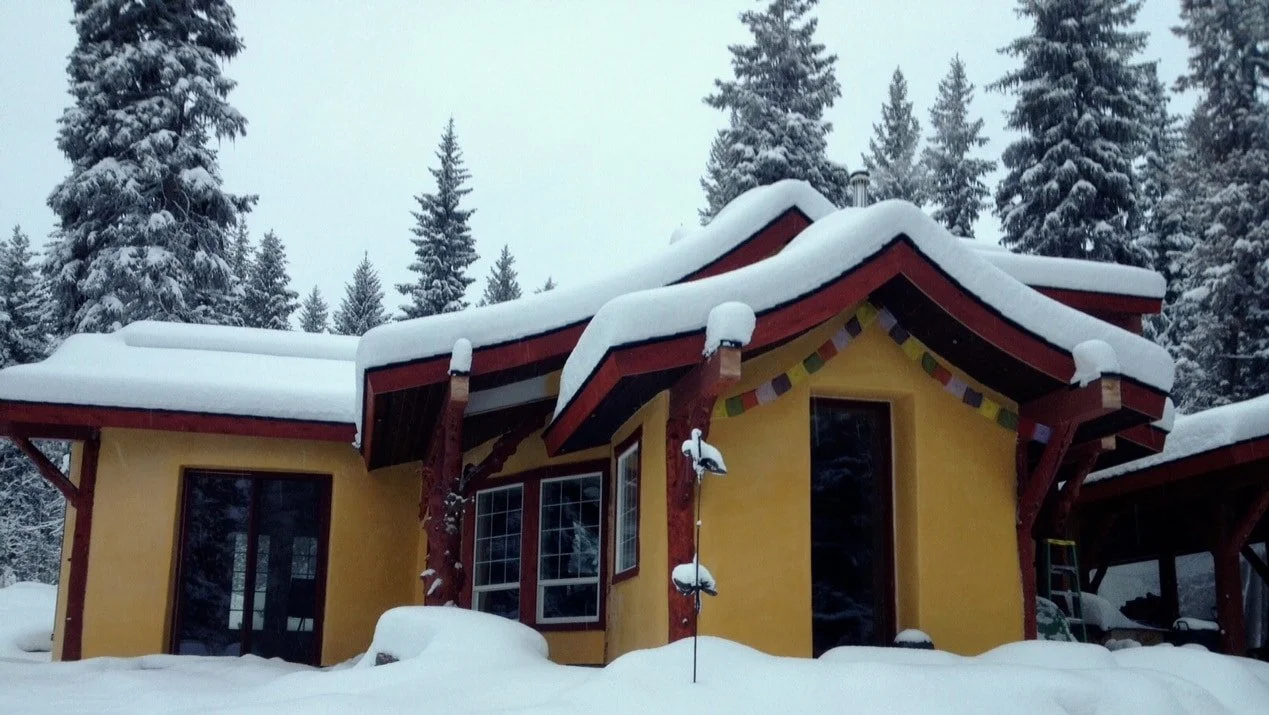Plastering Straw Bale Houses in Cold Climates - StrawBale.com
Plastering straw bale houses in cold climates is a difficult process, and site conditions greatly impact the results. Most people know plastering in direct sun is not a great idea, especially with natural plasters.
Many don't realize that plastering in cold conditions and/or wind can be equally damaging to the plaster.
It may seem obvious that plastering when the temperatures are below freezing is not good practice. This is because the water in the plaster can freeze as soon as the mud is placed on the wall.
What if the temperature is around 40 degrees F? If you are using Natural Hydraulic Lime (NHL 3.5), you cannot apply the material below 40 degrees F or above 85 degrees F.
Furthermore, you must protect the plaster from direct sun, high wind, frost, and rain for 72 hours. This can be difficult if you live in a cold climate where the temperature drops in the evenings and overnight.
Wrapping the building in tarps will help keep in some of the heat gathered during the day and produced through the curing process; however, you may be required to add heaters to the building to fully protect the plaster.
Other plasters can handle direct sun, wind, a little frost, and other adverse conditions; however, those plasters are usually modern synthetic plasters. Natural plasters, because they are natural and do not have chemical additives to deal with adverse conditions, are not likely to be able to handle such climatic conditions.
For this reason, natural plastering must be completed under moderate conditions or must be at least protected from extremes, as noted above.
-Andrew Morrison

